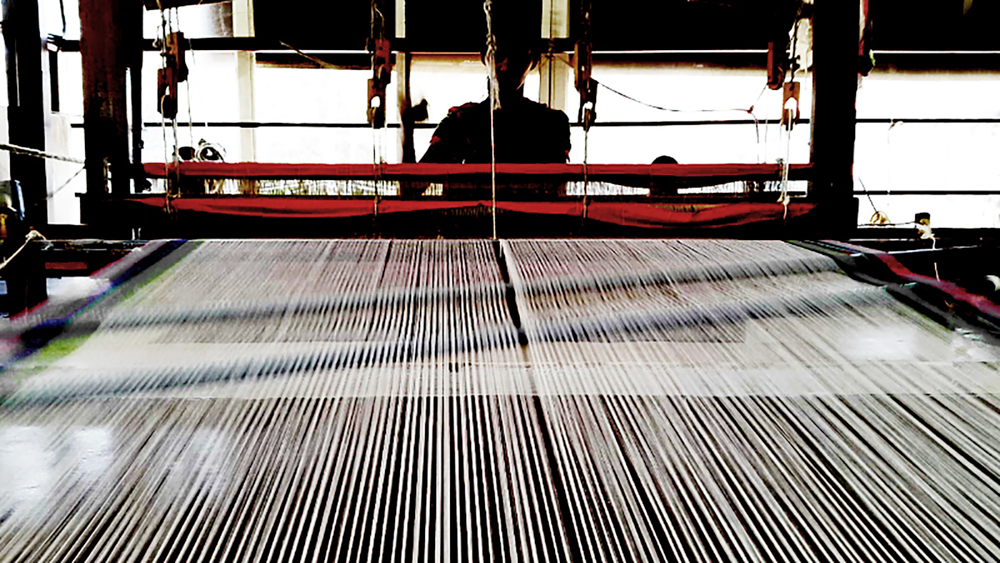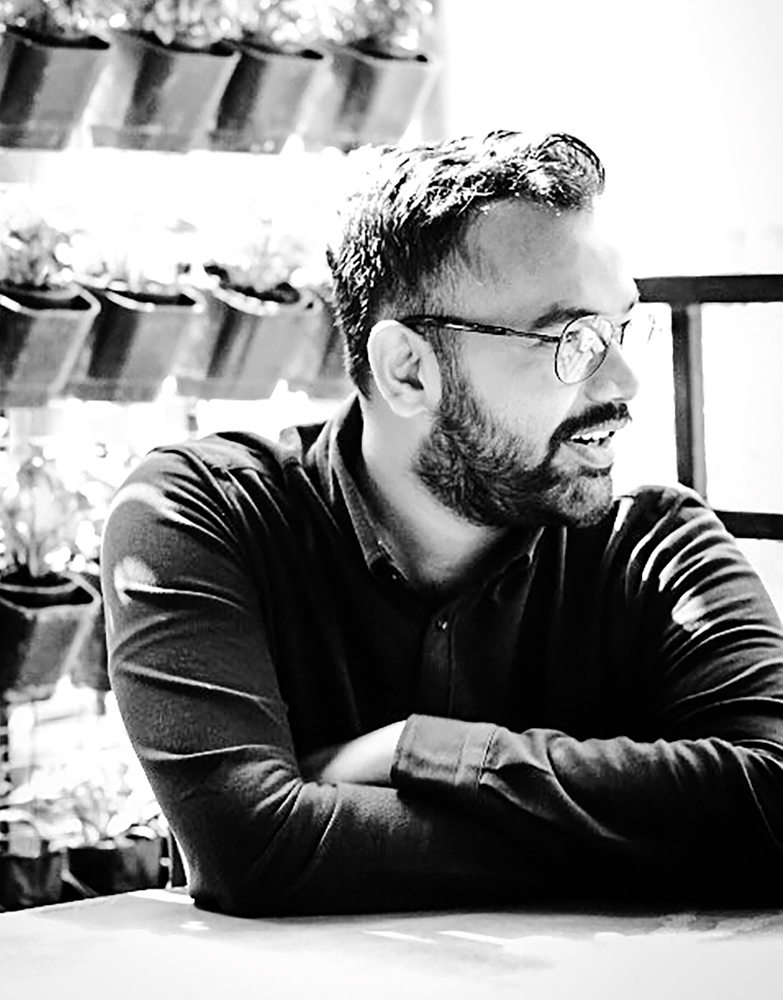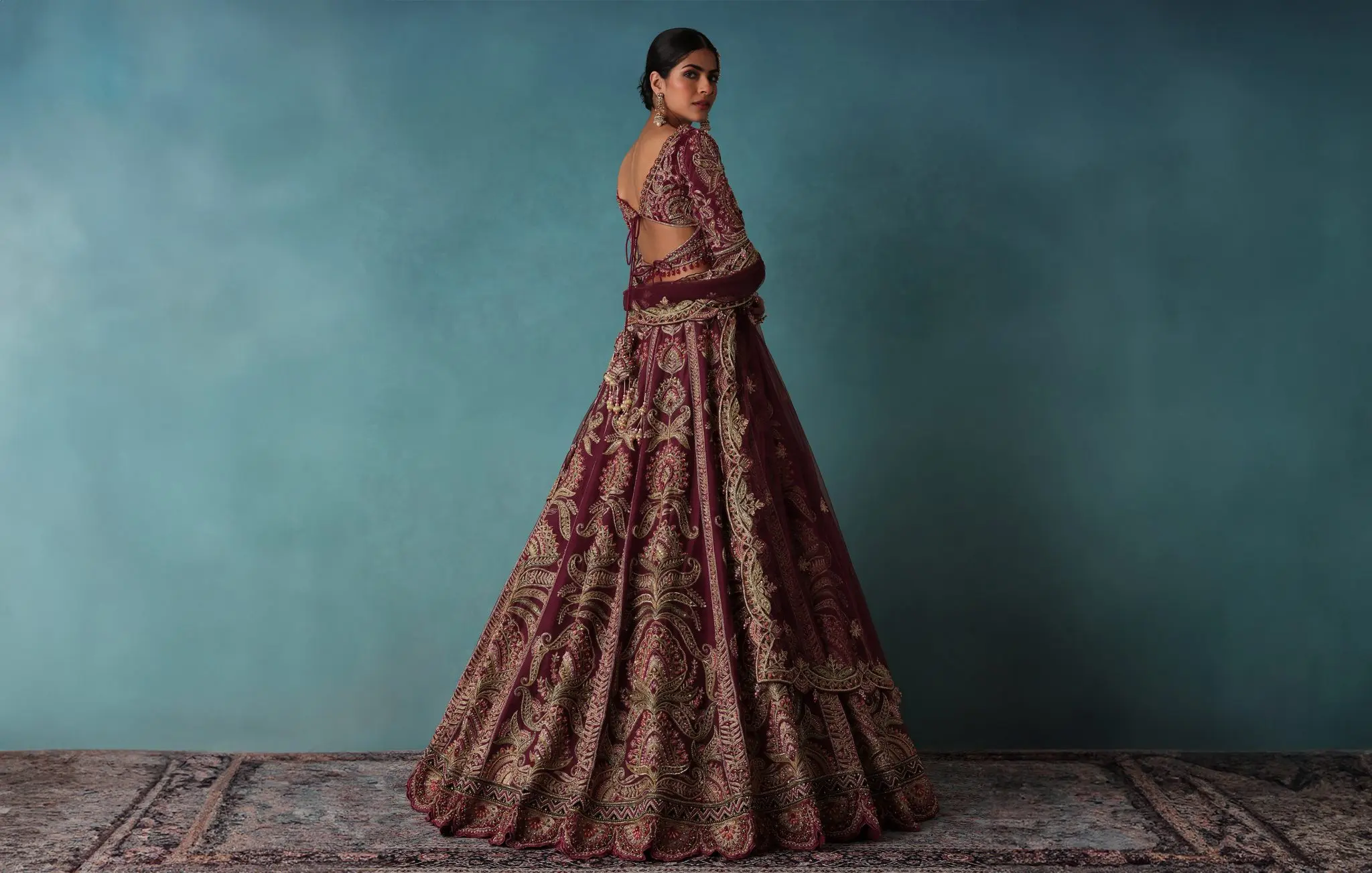Fashion
The State of Fashion in Kerala

A look at Kerala’s shifting sensibilities of fashion, moving towards an appreciation of native craftsmanship
Text Credits: Alan Alexander Kaleekal
Every so often, there is a shift in the winds, a palpable change in the air and a sense of urgency to open our doors wide to the new and unknown. As the dust settles and change drifts in alongside the winds, we are made witness to the birth of something new; terraforming, a much-needed change in the landscape.
For the better half of a decade, the fashion industry in Kerala has been going through a phase of self-discovery and soul searching that has seen a shift in not just the way we dress, but far more importantly, the way we look at ourselves. The change has been slow but sure and the process largely silent, and somewhere down the line, without much fanfare, requiems were surely being written for the past.
In 2009, when I left the country to study fashion in Paris, the fashion scene here was nearly non-existent and what little there was, seemed stagnant at best; there was not much that was conducive to the growth of a career in fashion. There were no seasons or trends, just rehashes of the old and stale, and the majority of the population seemed content the way things were. We have been largely a practical crowd and when it came to fashion, a little went a long way; clothes, like much else in our lives, were strictly functional up until a few years ago. Around six years later, when I returned home in 2015, I could feel a difference in the air. We were eager to usher in the future and the stage was being meticulously set for a new wave to crash against our shores.

A tectonic shift
Fashion, once an afterthought, was slowly taking centre stage, becoming a priority for a majority of the population. The recent buzz around boutiques and designer stores mushrooming across the state and the subsequent burgeoning of the fashion business here has brought a younger crop of designers to the fore. And it was not just fashion that went through a revival, the new-found interest in design studios, art cafés, fashion weeks, film festivals, and biennales has brought back art, design, music, cinema, and fashion into our daily lives. At the vanguard of this revolution are a bunch of dedicated entrepreneurs, designers, stylists, editors, image makers, and visual thinkers who have brought about a tectonic shift in our perception of all things fashion and design.
To presume, however, our tryst with fashion to be a very recent one would be a gaffe. As a designer, I believe much of what I naturally gravitate towards and what is largely reflected in the way I design and think fashion is an extension of our clothing culture in Kerala. Take for instance the buzzwords of contemporary fashion like minimalism, organic clothing and sustainable fashion; these trends have been doing the rounds for the past several seasons but little do we realise that these are design values that are intrinsically a part of the fabrics and garments of our state.

Simply standing apart
Think India, think colours. When the rest of India is known for their riot of colours and embroideries, Kerala stands apart in the fact that our traditional garments feature simple off-white cottons and plain gold borders. Unlike the rest of the country we have always shied away from unnecessary surface ornamentations and loud colours, opting instead for a stark minimalism long before minimalism was in vogue. When it comes to organic clothing, our weavers are masters in hand-weaving organic cotton, a staple of our handloom industry for centuries. We were pioneers in natural fabric dyeing too; the artisans around Balaramapuram took the art of dyeing a step further and introduced Ayurvedic medicinal dyes, giving birth to Ayurvastra, a lesser known and under-explored branch of wellness clothing. And at a time when designers all over the world are wracking their brains over the next big trend in sustainability, we are home to the best examples of zero waste designing in the garment industry, the humble saree and mundu. There is not a single garment in the entire lexicon of fashion that can boast of absolute zero wastage like a saree or a mundu; not a single thread needs to be wasted, no pattern cutting or fabric manipulation is required and every inch of the fabric is utilised without fail.

Lost pioneers
When such rich weaving tradition and artisanal crafts abound all around us, the question that begs to be asked is why we needed the aforementioned fashion renaissance in the first place. What restricted us from realising that when we were busy looking to the west for inspiration, our craftsmen were desperately seeking patronage? Far too often we tend to be hyperopic and fail to see what is right before us. We hesitate to take ownership of our inheritance, reluctant to acknowledge what was passed down to us over generations. Way before the ‘Make in India’ campaign was touted to be the next big revolutionary idea, European designers and Western retail giants including Carrefour and IKEA saw the merit in our weaves and relied on weavers of northern Kerala for their fabrics. While international designers kept our crafts alive, even closer home we needed North Indian designers like Rahul Mishra to champion our fabrics and envision their global appeal. Our failure to appreciate our crafts has not been without consequences. There are weavers’ societies in our state that weave handloom fabrics predominantly for European clients and shy away from Indian customers; our own artisans alienated from us due to a lack of trust and bad consumer relationships. The weaving of the famed Cannanore Crepe, once the pride of Kannur, is believed to be lost to us due to a lack of patronage and today what is woven and sold under the same name is a pale imitation of the original. A few swatches of the original Cannanore crepe cotton, hunted down from the far corners of the state adorn my fabric board as prized possessions today; perhaps the only reminders of what is lost to us.
Eschewing colonised fashion
For the past few seasons, I, like many of my contemporaries, have been working with different handloom societies and grassroots level artisan clusters across Kerala in an attempt to revive our weaves, to not only support the local artisans but also provide continued sustenance to our crafts. Each day spent with our weavers is a masterclass in fabric and fashion history, a history that needs retelling lest it be reduced to just stories for future generations. Much of what we perceive to be fashion history today is popular European and American fashion, and despite our love for the over-abused words like ‘Indo-Western’ and ‘fusion’ in our industry, most of what we know and perceive to be contemporary fashion originates from the West. The history of our fabrics and garments can only be retold through revival and patronage, and for that to happen it is not just design that needs to be updated, consumption needs to be equally self-aware and responsible to the society. If we as consumers fail to support and nurture our local talents, we fail as a society in the upkeep of our crafts. The lesson that needs to be learned here is that everything we need to go global is right here, waiting for us to take ownership; all we need to do is acknowledge, appreciate and support.

Fashion
Bridal Guide: Top Bridal Fashion Trends of 2025

Bridal fashion in 2025 is all about redefining tradition with a touch of modern flair. Whether you’re planning your big day or just love bridal style, here’s a quick look at this year’s top trends.
1. Modern Lehengas

Traditional lehengas get a fresh upgrade with 3D florals, bold shades like mauve and emerald, and rich fabrics like velvet. Expect classic silhouettes with unexpected color and texture combos.
2. Satin Minimalism

Sleek satin gowns are in. With clean lines, off-shoulder cuts, and subtle details, they radiate elegance for brides who prefer understated glam.
3. Sarees, Reinvented

Think tulle, organza, ruffles, and structured blouses. The timeless saree is going experimental — and it’s stunning.
4. Sustainable Bridal Wear

Eco-friendly fabrics, recycled embellishments, and upcycled jewelry are gaining traction, combining beauty with conscience.
5. Vibrant Color Palettes

Brides are ditching reds for lavender, emerald, and blush tones. Layered hues bring personality and vibrancy to the aisle.
Bridal Style, Reimagined
2025 bridal fashion is bold, elegant, and deeply personal. Whether you’re leaning classic or contemporary, this year is all about owning your bridal moment — your way.
Fashion
The Year of Statement Hat

When Anya Taylor-Joy stepped out at this year’s Cannes Film Festival in Jacquemus’ Le Chapeau Bomba, a delightfully oversized raffia hat it was clear that this accessory had become the season’s ultimate statement piece. The fall 2024 runways echoed this sentiment, with Chanel and Prada showcasing hats as the new must-have. Think of Sarah Jessica Parker’s oversized Maryam Keyhani creation, worn on the set of And Just Like That… earlier this year, or Margaret Qualley donning Chanel’s nautical style at Cannes. These hats are for the main characters who command attention, making a bold statement long before you arrive.
Altuzarra’s fall 2024 collection featured boxy headpieces on some models, each designed to evoke a specific character. “It was about finding joy in wearing a complete look, fully embodying a character,” explains designer Joseph Altuzarra. Interestingly, this was the label’s first foray into hats beyond casual knit and woven styles. ‘We didn’t plan to sell them,’ Altuzarra admits, ‘but they ended up being a hit.

Similarly, milliner Gigi Burris O’Hara has experienced a surge in demand. Although she launched her brand, Gigi Burris, in 2012, she only opened her first store late last year. “During leaner times, when people become more selective with their spending, they seek joy in thoughtful purchases,” she explains.
After years of embracing a more casual style, we’re now gravitating toward all things expressive. Maximalist content creator Sara Camposarcone has been embracing pieces from small brands like Potion23, renowned for its whimsical, witchy hats. “I feel like I can now wear bolder headpieces that complement my extravagant outfits,” Camposarcone shares. “Since discovering vintage fashion, I’ve developed a passion for finding great vintage pillbox hats or a 1920s fascinator.”
Fashion
The Iconic Bags and Their Names

Handbags are more than just functional accessories; they are statements of style and symbols of status. Over the years, several handbags have achieved iconic status, becoming synonymous with luxury and timeless fashion. Here’s a look at some of the most iconic bags and the stories behind their names.
Hermès Birkin

Origin: The Birkin bag was born from a chance encounter between actress and singer Jane Birkin and Hermès CEO Jean-Louis Dumas on a flight in 1981. Birkin mentioned her struggle to find a perfect weekend bag, leading Dumas to design a bag tailored to her needs.
Icon Status: The Birkin is known for its exclusivity, craftsmanship, and high price tag. It has become a symbol of wealth and luxury, often with a waiting list of years.
Chanel 2.55

Origin: Created by Coco Chanel in February 1955 (hence the name), the Chanel 2.55 was revolutionary for its time, introducing the concept of a shoulder bag, freeing women from the inconvenience of clutch bags.
Icon Status: With its quilted leather, chain strap, and distinctive CC lock (added in the 1980s by Karl Lagerfeld), the 2.55 remains a timeless piece, beloved by fashionistas worldwide.
Louis Vuitton Speedy

Origin: Introduced in the 1930s, the Speedy was designed as a smaller version of the Louis Vuitton Keepall. It became particularly popular in the 1960s when Audrey Hepburn requested a smaller version, leading to the creation of the Speedy 25.
Icon Status: Known for its classic monogram canvas and practicality, the Speedy is a versatile bag that has remained a staple in the fashion world for decades.
Dior Lady Dior

Origin: First presented in 1994, the Lady Dior bag was initially known as “Chouchou.” It gained its iconic status when Princess Diana was photographed with it in 1995, leading to its renaming in her honor.
Icon Status: The bag’s signature cannage stitching and dangling Dior charms make it instantly recognizable. It’s a favorite among celebrities and royalty, symbolizing elegance and sophistication.
Gucci Jackie

Origin: Originally called the Fifties Constance, this bag was renamed the Jackie after Jackie Kennedy was frequently photographed carrying it in the 1960s.
Icon Status: The Jackie bag’s hobo shape and piston strap closure make it a timeless piece. It has seen numerous revivals and remains a classic in the Gucci lineup.
Prada Galleria

Origin: Named after the historic Prada boutique in Milan’s Galleria Vittorio Emanuele II, the Galleria bag epitomizes the brand’s heritage and craftsmanship.
Icon Status: With its clean lines, structured shape, and Saffiano leather, the Galleria bag is a symbol of modern elegance and understated luxury.
Fendi Baguette

Origin: Designed by Silvia Venturini Fendi in 1997, the Baguette was named for its shape, resembling the French baguette loaf, and designed to be carried under the arm.
Icon Status: Popularized by its appearance on the TV show “Sex and the City,” the Baguette became a must-have accessory, famous for its countless variations in colors and materials.
Balenciaga City

Origin: Introduced in the early 2000s, the Balenciaga City bag, also known as the Motorcycle bag, was designed by Nicolas Ghesquière. Its casual yet chic design quickly gained a cult following.
Icon Status: Known for its slouchy silhouette, distinctive hardware, and tassels, the City bag became an icon of the 2000s and continues to be a beloved piece.
These iconic bags have transcended fashion trends, becoming enduring symbols of style, craftsmanship, and luxury. Each bag tells a unique story, adding to its allure and making it a coveted piece for fashion enthusiasts around the world. Investing in one of these iconic bags is not just about owning a stylish accessory but also a piece of fashion history.
-

 Style11 months ago
Style11 months agoBridal Guide : Best Looks of Radhika Merchant Ambani
-

 Fashion1 year ago
Fashion1 year agoMost Discussed Ajrakh Saree of Alia Bhatt
-

 Entertainment1 year ago
Entertainment1 year agoThe Most Stylish Guests of Bhagya Suresh Reception
-

 Entertainment1 year ago
Entertainment1 year agoBridal Bliss : All Bridal Looks of Swasika Vijay
-

 Movies1 year ago
Movies1 year agoA Nostalgic Journey Through Love &Cinema : Best Bollywood Romantic 90s Movies
-

 AD8 months ago
AD8 months agoPopular Curtain Fabrics to Consider for Your Home
-

 Fashion1 year ago
Fashion1 year agoMajor Denim Trends You Need To Know in 2024
-

 Events9 months ago
Events9 months agoBest of Fashion Looks : Diya Krishna Wedding




































